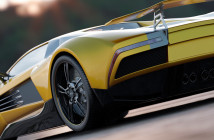By Richard Gregory, co-founder of SAScon
With global scale challenges, such as climate change and aging populations, increasingly we are turning to technology to help create opportunities that were previously impossible. By continuing to embrace new technologies we can find new innovative ways to increase our understanding and to help combat these threats.
It is worth noting, however, that it is not the technology itself that presents the opportunities, but rather it is the new processes that the technology actually enables and the imagination of people to foster real positive change.
One technology which has the potential to really make waves when it comes to increasing the interconnectivity between people and machines is the Internet of Things (IoT). While IoT technology has been around for some time, lately there has been a shift in focus from the number of connected devices in the chain, to the end product; namely the enhanced service that the technology enables. Moving forward, we are likely to see more and more emphasis placed on the actual usefulness of the technology.
IoT driving sustainable business practices
One useful application for IoT, which is being trialled worldwide, is using the information the technology gathers to help drive sustainable business practices. The green market stands to benefit enormously from IoT, as it can help aid initiatives to drive down energy consumption and reduce global emissions. It can also be used to help improve and enrich people’s daily lives.
However, in order to do so, IoT will have to move away from the consumer market, and instead target the individual sectors that stand to gain from the interconnectivity that IoT enables. So let’s take a look at three sectors that stand to benefit from IoT technology:
Cities
At present, pioneering cities such as Copenhagen in Denmark and Kyoto in Japan are leading the way when it comes to green innovation and it is predicted that the world will house around 88 smart cities by as soon as 2025 [IHS]. IoT will play a major role in driving these changes by producing insights which can be utilised to improve services such as public rail and road networks.
In the consumer market, IoT technology is already being used to integrate household appliances, and smart cities are beginning to deploy this technology to improve the overall service delivery. For example, water supply systems can be fitted with IoT sensors to accurately measure elements such as water pressure and flow. This can allows city authorities to be proactive rather than reactive, as soon as a problem is detected by a sensor, at any point along the chain, authorities can take immediate action before a household even registers it as a problem.
Healthcare
The IoT also has the potential to completely revolutionise the healthcare market and give people much greater control over decisions that affect their health and wellbeing. With statistics from Eurostat in 2015 suggesting that the UK population could be the largest in Europe by 2050 and with the NHS service already stretched as it is, it seems a solution is urgently needed to ensure everyone has access to care when they need it.
This is where IoT technology can come in; from sending patients reminder SMS messages and cutting down on missed appointments, to monitoring elderly patients and those with chronic health conditions in their homes and alerting care teams when there is a problem, the opportunities for IoT to make improvements to the health system are endless.
Transport
By connecting the various strands of a journey, it is possible to use data generated from IoT to dramatically improve the way in which we travel. For example, cars now come equipped with hundreds of sensors to let drivers know if the car is functioning properly.
In the future we are likely to see a lot more electric cars on the roads and many of these have built-in sensors, which can remotely measure things like battery power and how soon the car will need a charging point. Developers predict that eventually completely autonomous vehicles will navigate seamlessly on a transport network of smart roads with smart traffic signals and parking. But until then, IoT can also be used to make the journey much more efficient and can help to drive down emissions.
With smartphones already used to provide GPS information, IoT will soon be able to provide more sophisticated information about the driver’s route as it will be able to transmit the precise speed and direction of each vehicle, helping to reduce congestion by anticipating bottlenecks before they even occur.
In conclusion
Whilst the technology might be the driver, to enable real positive results there needs to be a significant change in mindset. The opportunities that IoT creates are endless but they require innovative thinking to create new business practices and models that allow these new technologies to be applied to many more sectors.
For the technology to really work, it also requires collaboration; initiatives which encourage people to trade best practices and start a dialogue around how to live a greener and more sustainable life can help to create a dynamic community approach.
SAScon is organised by the digital community for the digital community, and it is a non-profit event.





